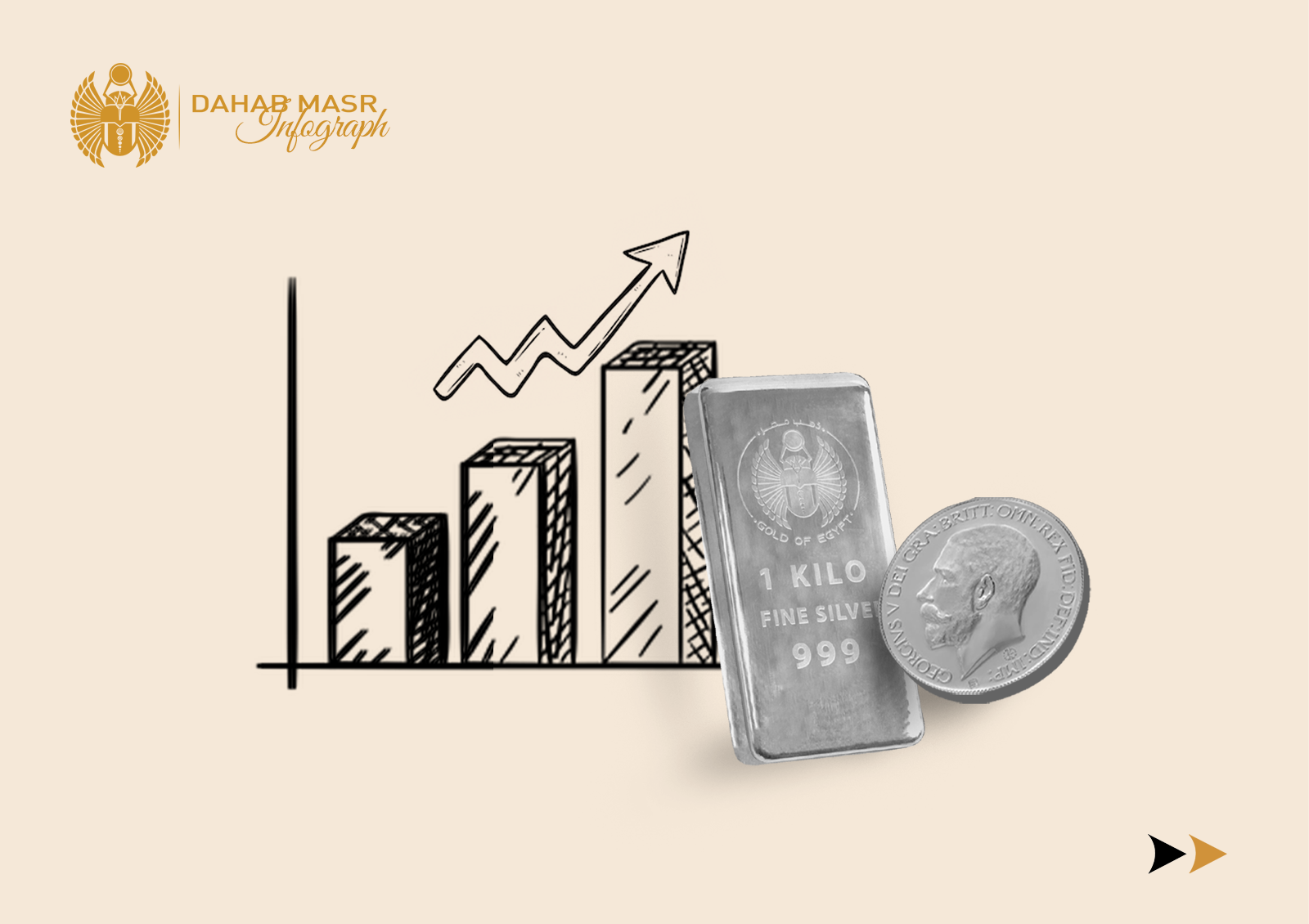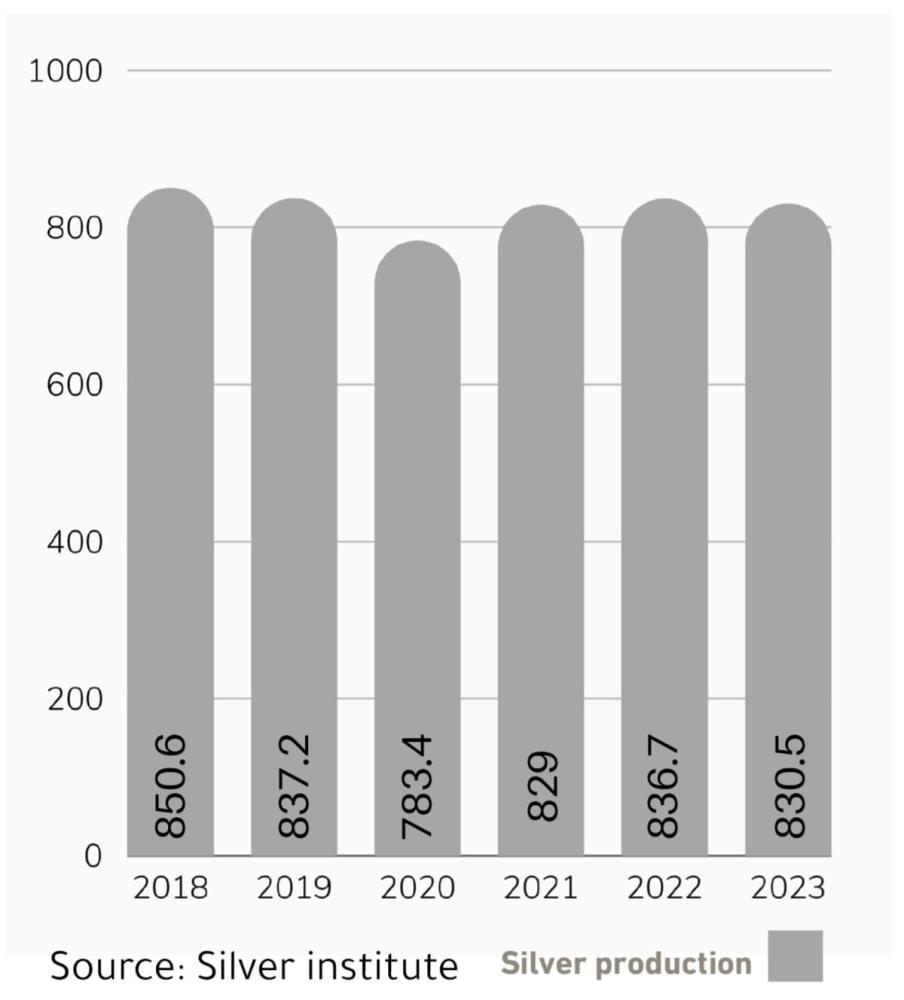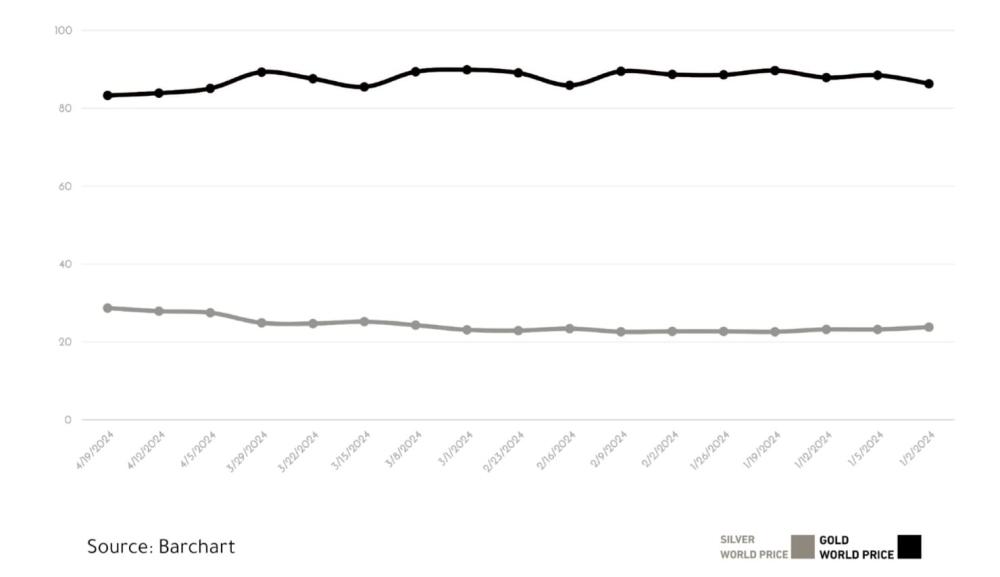إلى أين تتجه الفضة في 2024؟
- Home
- Information Center by DahabMasr
- إلى أين تتجه الفضة في 2024؟

إلى أين تتجه الفضة في 2024؟
:الأداء العام للفضة
.يستعد أداء الفضة للتفوق على الذهب خلال العام الجاري مع تزايد توقعات الطلب على المعدن بدعم من تسارع وتيرة الإنتاج الصناعي العالمي وتوجه الدول نحو الاقتصاد الأخضر، حيث يرتبط أدائها بصحة الاقتصاد العام على نقيض الذهب الذي عادة ما ينتعش أوقات الضعف وعدم اليقين الاقتصادي ولذلك تعتبر الفضة أكثر حساسية للتغيرات الاقتصادية وتميل إلى التفوق على الذهب في أوقات التوسع الاقتصادي القوي
:الطلب العالمي
.توقع معهد الفضة العالمي، في أحدث تقاريره الصادرة في أبريل 2024، وهو مؤسسة دولية غير ربحية تأسست عام 1971 في واشنطن متخصصة في الأبحاث المتعلقة بصناعة الفضة، أن يصل الطلب العالمي للفضة إلى 1.219 مليار أونصة في عام 2024، على أن يسجل ثاني أعلى مستوى له على الإطلاق مقارنة بنحو 1.195 مليار أونصة في 2023، مدفوعا بقوة التطبيقات الصناعية وانتعاش الطلب على المجوهرات والمصنوعات الفضية.
.كما أشار التقرير، أن يسجل الطلب الصناعي للفضة ارتفاعًا سنوياً بنسبة 9% في عام 2024 بعد أن بلغ 654.4 مليون أونصة خلال العام الماضي. وتعتبر صناعات الخلايا الكهروضوئية والسيارات هما المحرك الرئيسي للنمو هذا العام بجانب شبكات الجيل الخامس ومجال الإلكترونيات الاستهلاكية (استخدامات الذكاء الاصطناعي في النقل - التكنولوجيا الحيوية والنانو – مراكز البيانات)، الذي يُعد دفعة إضافية لسوق الفضة الصناعية
:إنتاج الفضة العالمي
.من المتوقع أن يتراجع إنتاج مناجم الفضة عام 2024 ليصل إلى 823.5 مليون أونصة مقابل 830.5 مليون أونصة في 2023، بقيادة الإنتاج في مناجم المكسيك والولايات المتحدة والمغرب
.وتشير بيانات التقرير أن يرتفع العجز(الفرق بين الطلب والعرض) هذا العام بنسبة 16.8% ليصل إلى 215.3 مليون أونصة مقابل 184.3 مليون أونصة في 2023، إلا أنه سيظل مرتفعًا بشكل استثنائي وفقًا للمعايير التاريخية
على الجانب الأخر، قًدرت هيئة المسح الجيولوجي بالولايات المتحدة – وكالة حكومية متخصصة في العمليات الجولوجية والجغرافية – إنتاج المناجم العالمي في العام الماضي عند 832 مليون أونصة مقابل الإنتاج الفعلي البالغ 819.2 مليون أونصة خلال عام 2022، والاحتياطيات العالمية بنحو 19.5 مليار أونصة خلال عام 2023

:السعر
.تداولت العقود الفورية للفضة في بورصة نيويورك عند مستوى 23.5 دولار للأونصة في بداية شهر يناير 2024، لتصعد بنهاية تداولات 19 أبريل عند مستوى 28.7 دولار للأونصة; فيما قفزت عقود يونيو الآجلة لتلامس مستوى 29 دولار للأونصة ما يدعم احتمالية تحركات إيجابية كبيرة في الأيام المقبلة
.أيضًا ارتفعت نسبة الذهب إلى الفضة - عدد أونصات الفضة التي تعادل شراء أونصة واحدة من الذهب - إلى 83.3% بنهاية تداولات الجمعة 19 أبريل، مقابل 86.3% في أوائل يناير انعكاسًا للارتفاع في أسعار الفضة العالمية بالتزامن مع تزايد سعر أونصة الذهب، وتستخدم هذه النسبة لقياس الاتجاهات المستقبلية لأنها تشير إلى الأداء الحالي للفضة مقابل ارتباطها بالذهب
وتوقع بنك جي بي مورجان ارتفاع الأسعار الفورية للمعدن الصناعي الثمين عند 30 دولار بنهاية العام الجاري، فيما رجح بنك يو بى أس وسيتي بنك أن تصل الفضة إلى 32 دولار للأونصة في النصف الثاني من العام
وعلى صعيد السوق المحلي، سجل سعر شراء جرام الفضة في بداية العام الجاري 42.5 جنيه مقابل 46 جنيهًا بنهاية تعاملات 19 أبريل، بنسبة زيادة %8.2

:تنبيه
تقدم هذه الوثيقة تحليلاً تم إعداده من قبل قسم الأبحاث والتحليلات الخاص بشركة "ذهب مصر"، استنادًا إلى بيانات مستقاة من جهات عدة ذات مصداقية عالية. بالرغم من ذلك، لا تضمن "ذهب مصر" دقة هذه المعلومات والبيانات حيث أنها ليست المسؤولة عن إعدادها أو جمعها، وعليه لا تتحمل "ذهب مصر" مسؤولية أي أضرار أو خسائر مباشرة أو غير مباشرة قد تنتج عن الاعتماد على المحتوى الوارد بها. وأن استخدام هذا التحليل وأية قرارات تنتج عنه تقع مسؤوليته على عاتق القارئ وحده. كما توصي "ذهب مصر" بأن يستشير القراء مستشارًا ماليًا محترفًا قبل اتخاذ أية قرارات استثمارية



 EN
EN